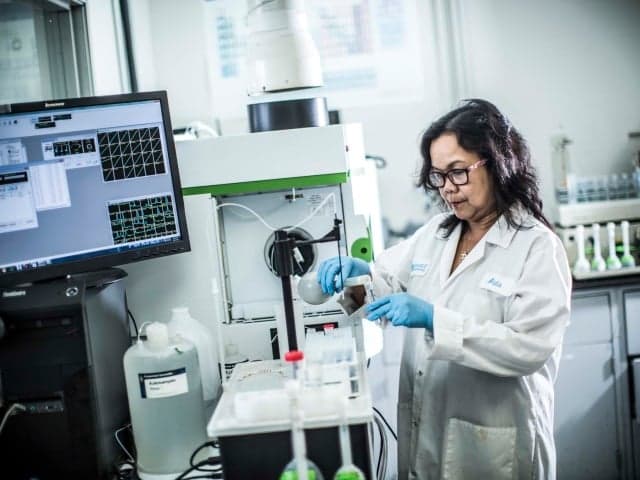Toys & Children's Products Testing Services
Navigate complex CPSIA compliance with confidence through Element's comprehensive Toys & Children's Products Testing services. Our expert-led testing ensures your products meet all safety requirements, from lead content to physical hazards. We deliver the certainty you need to bring children's products to market safely and legally, backed by reliable certification and global expertise.

What are Product Testing services for Toys and Children's Products at Element?
If you manufacture products (furniture, toys, garments, etc.) designed for use primarily by children aged 12 or younger, then it is important that you have a materials testing program in place by a third-party testing laboratory.
The Consumer Product Safety Improvement Act, or CPSIA, requires each accessible component of children’s products to be tested for total lead, additional heavy metals, and other organic compounds. Your products also need to comply with ASTM F963.
Element's comprehensive testing services help manufacturers of children's products comply with CPSIA regulations and ASTM F963 standards.

What can Element offer you for Toys & Children's Products Testing?
Key tests offered
Key tests offered
Element offers a full suite of ASTM F963 testing procedures, including flammability testing, toxicology analysis for lead and heavy metals, phthalates testing, and physical safety assessments. These include:
- Flammability testing - numerous test methods from simple to complex
- Toxicology testing - lead analysis and soluble heavy metals
- Toxicology testing - phthalates di(2-ethylhexyl) (DEHP) also known as dioctyl phthalate (DOP), DnOP, DBP, BBP, DiNP and DiDP
- Small Objects testing - choke hazards
- Accessible Edges testing - sharp edges
- Accessible Points testing - sharp points
- Packaging Film testing - thickness and spacing of holes
- Folding Mechanisms testing - pinch points
- Cords, Straps testing - choke hazards
Components and materials we test
Components and materials we test
We test all accessible parts in children's products, including paint coatings, metal components, plastics containing phthalates, small parts, packaging films, folding mechanisms, and straps. Our testing covers both finished products and individual components to ensure complete compliance with all CPSIA requirements.
Methods and solutions offered
Methods and solutions offered
We provide complete documentation and certification support, with expert guidance through regulatory requirements and compliance processes.
Which labs offer this service
Which labs offer this service
Our team operates from a global laboratory network, including Element St Paul in Minnesota which offers a full product evaluation laboratory. Find your nearest Product Qualification Testing hub on our Locations Page.
Standards we test to and the materials we test
- Paint and coatings
- Metal components
- Phthalate-containing materials
- Packaging films
- Cords and straps
- Children's furniture materials
- Bedding materials
- Bicycle components
- Garment materials
- Puppet materials
- Hair accessory materials
Your Challenges, Our Solutions
Complex Regulatory Navigation
Multiple Testing Requirements
Strict Safety Thresholds
Business Risk Management
Why Choose Element

Global Reach, Local Support
Absolute Testing Certainty
Expert-Led Support
Complete Testing Solutions
Frequently asked questions
What products require CPSIA testing?
Any consumer product designed or intended primarily for children aged 12 years or younger requires testing. This includes toys, furniture, garments, bicycles, bedding, and accessories. The law requires that each accessible part or component of the product be tested.
Are there any exclusions to the CPSIA rules?
CPSIA rules exclude products intended for use by all ages as well as educational materials with a functional purpose (e.g. chemistry sets, electronics kits). They also exclude component parts that are inaccessible to children; with "inaccessible" meaning it includes a sealed covering or casing (paint, coatings or electroplating are not sufficient).
What are the current lead content limits?
Products must contain no more than 100 ppm of lead, unless technically infeasible. This applies to all accessible parts and components.
What tests are specified as part of ASTM F963?
ASTM F963, "Standard Consumer Safety Specification for Toy Safety," contains specifications and test methods to determine safety hazards—including over 30 test procedures. Some of these include:
- Flammability testing
- Toxicology testing
- Toxicology testing - phthalates di(2-ethylhexyl) (DEHP) also known as dioctyl phthalate (DOP), DnOP, DBP, BBP, DiNP and DiDP
- Small Objects testing
- Accessible Edges testing
- Accessible Points testing
- Packaging Film testing
- Folding Mechanisms testing
- Cords, Straps testing

Explore our global network of labs and find your nearest location
VIEW ALL LOCATIONSRelated services

Product Compliance Testing Services
Ensure global product compliance with expert testing & certification for FDA, REACH, RoHS, CE & more. Fast, tailored support for complex market needs.

Hazardous Materials Testing and Inspection
Element helps you to protect your employees by conducting hazardous materials testing & inspection to manage and safely dispose of any hazardous waste.

Flammability Testing Services
Ensure product safety with Element’s expert-led Flammability Testing Services. Vertical & Horizontal testing. Meet industry standards, reduce risk, and get to market faster.

Textile Testing Services
Ensure your textiles meet quality and regulatory requirements with comprehensive textile testing solutions that protect your brand and accelerate market entry. Learn More.

Chemical Analysis Services
Element’s chemical analysis services provide accurate material verification, compliance testing, and contamination detection. Our advanced methods deliver reliable insights for product development, quality control, and regulatory standards.

Environmental and Climatic Product Testing Services
Ensure your products perform under extreme conditions with Element’s Environmental and Climatic testing services. View the range of fast, reliable testing services.
